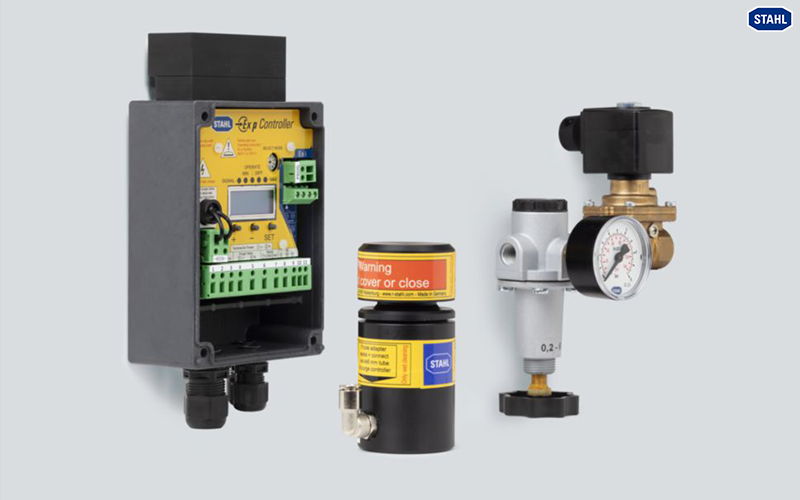The following measures can be used:
1. EXPLOSION-PROOF STRUCTURES
In an explosion pressure-resistant structure, the container is designed with a calculated maximum pressure, meaning that the container is designed so that it can withstand the design pressure for long periods of time without deforming. This design method provides significant safety margins and should therefore only be used for equipment in which explosions are very probable and cumulative.
However, some containers will only be subjected to the load of an explosion a few times throughout their service life. These structures must also be designed so that they can withstand the pressure of an explosion. In this case, you do not need to take safety margins for the strength values of the material into account – it is assumed that the plastic deformation that occurs as the result of a load provides enough of a safety margin. In the event of an explosion, however, it must be assumed that the container will deform and, subsequently, no longer meet the strength requirements. As a result, the container must be inspected accordingly before it can be used after an explosion.

2. EXPLOSION PRESSURE RELIEF
Explosion pressure relief is intended to limit the effect of pressure inside the system components to be protected to a safe extent. This includes any measures that involve equipment or containers, which were originally closed, opening in a safe direction in the event of an explosion (predetermined breaking points). This protective measure must not be used if it would eject substances classified as toxic, corrosive, irritant, carcinogenic, teratogenic or mutagenic in accordance with the German Ordinance on Hazardous Substances. Numerous variants of type-tested and certified explosion relief equipment are available on the market. mostly in the form of rupture disks or explosion doors.
3. EXPLOSION SUPPRESSION
Explosion suppression involves detecting an impending explosion using a pressure detector or a visual detector that reacts to flame radiation, then blowing in an extinguishing dust to prevent the explosion at an early stage. This not only reduces the pressure that the explosion generates, which also results in the "reduced maximum explosion pressure" as the maximum interior pressure, which can be generated despite the protective measure (worst-case scenario).
Explosion suppression systems consist of explosion detectors, alarm centre and extinguishing medium containers. Preferred extinguishing dusts include ammonium phosphate or sodium bicarbonate, as these are effective suppression materials. The extinguishing effect is based on quenching, i.e. cooling the flame zone by introducing the inert material. When the dusts listed here are used, this effect is reinforced by endothermic decomposition reactions that release inert gases.
Explosion suppression offers a number of advantages in areas where no other, more cost-effective measures can be implemented due to space restrictions. The explosion is contained within the container, making this method suitable for use in areas of continuous operation or particularly hazardous spaces. The minimal space requirements also enable easy access to all parts of the equipment.
The downside of explosion suppression systems is the relatively high investment costs. They also incur significant maintenance costs, since the pyrotechnical elements need to be replaced regularly, as well as recommissioning costs after an explosion has occurred.

4. PREVENTING EXPLOSION TRANSMISSION
Measures designed to prevent an explosion being transmitted are referred to as active or passive systems. Passive systems are a continuous part of the supply flow and their mechanical design prevents an explosion from breaking through. Rotary valves, cycle valves, flame barriers and material buffers are all examples of passive systems.
Active systems rely on detecting an explosion and initiating a protective step in order to obstruct a line, for instance. They include quick-closing valves, which close conduits using a pneumatically driven valve blade, and extinguishing material barriers with suitable explosion detection.
By implementing these four measures, you can control explosions, first and foremost enabling you to prevent injuries, but also making it possible to minimise damage to systems.